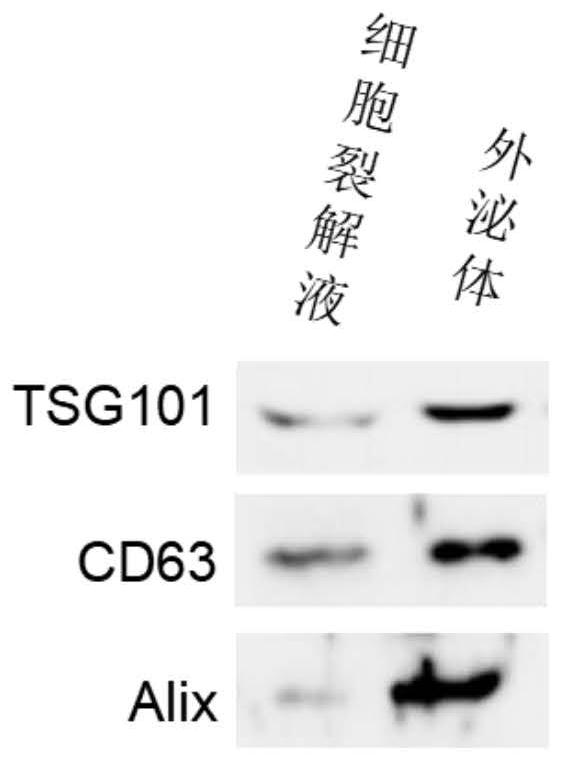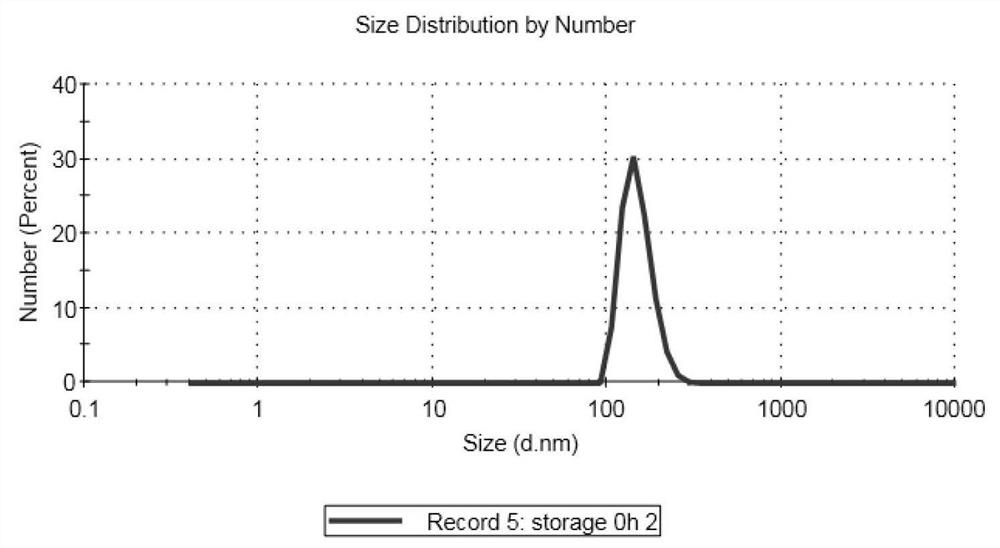Bladder targeted drug-loaded exosome and application as well as drug for treating bladder diseases
A technology of bladder disease and exosomes, applied in the field of biomedicine, can solve problems such as increasing drug costs, lack of tissue targeting, and difficulty in achieving targeting effects, so as to improve therapeutic effects, reduce drug side effects, and facilitate application foreground effect
- Summary
- Abstract
- Description
- Claims
- Application Information
AI Technical Summary
Problems solved by technology
Method used
Image
Examples
Embodiment 1
[0027] Normal human embryonic kidney cells HEK-293 were collected (this example takes normal human embryonic kidney cells HEK-293 as an example). Take the culture medium of normal human embryonic kidney cells HEK-293 (kidney cell culture medium is cultured with exosome-free serum and DMEM medium) and centrifuge at 2000g centrifugal force for 10min, take the supernatant; then centrifuge at 10000g centrifugal force for 30min , take the supernatant, discard the cell debris and sediment; centrifuge the centrifuged cell culture solution at 100000g (g is the acceleration of gravity) centrifugal force for 2h, resuspend the precipitate with sterile PBS and store it for a short time at 4°C to obtain Bladder targeting exosomes. The extracted and isolated bladder-targeted exosome surface marker protein and particle size distribution are as follows: figure 1 , figure 2 shown. The expression of exosomes secreted by kidney cells was measured, and the concentration of exosomes protein se...
Embodiment 2
[0029] The exosomes secreted by normal human embryonic kidney cells HEK-293 were collected and stained with PKH67 to track the distribution of exosomes secreted by kidney cells in the body. The specific steps are as follows:
[0030] Take 100 μg of exosomes secreted by kidney cells HEK-293, incubate with 1 μL of PKH67 overnight at 4°C in the dark, centrifuge at 100,000 g (g is the acceleration of gravity) for 2 h, discard the supernatant, wash twice with PBS, no Exosomes secreted by kidney cells were resuspended in PBS and injected into C57bl / 6 mice through the tail vein. In this example, male C57bl / 6 (4-6 weeks) mice were purchased from Beijing Huafukang Biotechnology Co., Ltd. Co., Ltd., all mice were bred in SPF facilities; 24 hours later, the mice were anesthetized, and the liver, lung, spleen, bladder, kidney, stomach and intestines of the mice were taken to make frozen sections. After the nuclei were stained with Hoechst33342, the secretion of kidney cells was observed. ...
Embodiment 3
[0032] In this example, gemcitabine hydrochloride, a drug used to treat bladder diseases, was selected.
[0033] In this example, drugs for treating bladder diseases are introduced into bladder-targeted exosomes to prepare drugs for bladder tumor-targeted therapy. The specific operations are as follows:
[0034] 1) Take 150 μg of bladder-targeted exosomes and mix them with gemcitabine hydrochloride. The electroporation buffer can be (PBS, DMEM, Cytomix, Tris-HCl) to make up to 150 μL, and transfer to different specifications (0.2cm, 0.4cm) electroporation cups middle. Use different waveforms (exponential wave, square wave) and different voltages (50V, 100V, 200V, 300V) to perform electroporation on bladder-targeted exosomes and gemcitabine hydrochloride;
[0035]2) The electroporation product was ultracentrifuged for 120 min under a centrifugal force of 100,000 g, and the supernatant was collected to measure the drug loading. Results: For gemcitabine hydrochloride, 150 μg bl...
PUM
 Login to View More
Login to View More Abstract
Description
Claims
Application Information
 Login to View More
Login to View More - R&D Engineer
- R&D Manager
- IP Professional
- Industry Leading Data Capabilities
- Powerful AI technology
- Patent DNA Extraction
Browse by: Latest US Patents, China's latest patents, Technical Efficacy Thesaurus, Application Domain, Technology Topic, Popular Technical Reports.
© 2024 PatSnap. All rights reserved.Legal|Privacy policy|Modern Slavery Act Transparency Statement|Sitemap|About US| Contact US: help@patsnap.com










